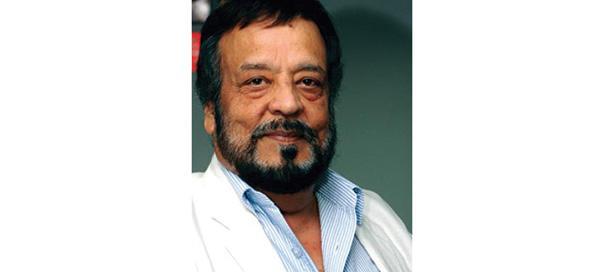It saddens me to see how the Indian media is ignoring the wrongful intimidation by police on a fellow journalist in Hyderabad, Resident Editor S Nagesh Kumar of The Hindu, for publishing a story that questioned the motive of the police chief’s meeting with a religious leader. The harassment began with the issue of an arrest warrant against him to the refusal to accept his anticipatory bail to sending police officers to his home and his wife’s nursing home.
Reports from Hyderabad said that even though the Andhra Pradesh High Court had granted the editor anticipatory bail in the case concerning the news story about DGP Dinesh Reddy, a posse of policemen barged into his residence on Saturday, ostensibly to issue a notice requiring him to appear in the local police station. Eight uniformed policemen forced their way into the editor’s house after pushing aside the watchman. Three of them walked right into the dining hall and questioned his 81-year-old mother and daughter on his whereabouts.
The story was also carried by Telugu news channel Zee 24 Gantalu. So the police arrested two journalists who reported the story and sent to judicial custody. Police booked them for airing a false story to harm the DGP’s reputation and for “deliberate and malicious acts”. The channel was charged with airing morphed videos.
Both stories suggested that DGP Reddy visited a godman to seek his benefaction to get an extension on his job. The story also suggested that Reddy went to the godman with some files on a Thursday, when the godman usually meets people with personal problems. That the item was carried as a front page story also incensed Reddy.
In his complaint, Reddy alleged that the news report was false and published without any verification of facts. Now if the report was truly false, the regular procedure was for DGP Reddy to call a news conference and deny the allegations.
But instead, he lodged an FIR. The sad part is that in the complaint the DGP even questions why the story was published on the front page, almost telling the newspaper which story should be published on which page.
My hope is that a hallowed institution like The Hinduwill launch a serious crusade against such muscle flexing by the police and the whole journalistic community of India will join that drive.
We should realize that if this can happen to even one journalist anywhere in India, tomorrow it can happen to any journalist across the country, seriously endangering the freedom of expression and thought in India, which claims to be the best and the largest democracy in the world. The concern and the protests about this incident, which reminded me of the State of Emergency of the 1970s should not have been limited to Andhra Pradesh only, but should have become a national concern. The fact is that harassment by police of ordinary Indians has become a curse to our civilian life. Until not long ago, police even had the audacity to refuse to register complaints of a number of women across the country who alleged that they were raped. That means Indian police, just like politicians, have too much power and no accountability.
In such a case, where, instead of denying a specific report in the press, the Andhra Pradesh Police tried to intimidate the newspaper’s editors and TV reporters, the role of the judiciary becomes even more crucial.
Apparently, the United States has one of the world’s strongest systems of legal protection for freedom of the press. The First Amendment of the US Constitution provides the core guarantee of press freedom and freedom of speech. There is no doubt that those rights have come under pressure at various times in the country’s history, but the independent judiciary has repeatedly issued rulings that protect and expand the right of journalists to be free of state control. The courts have also protected journalists from libel and defamation suits that involve commentary on public figures.
The relationship between journalists and the police is a delicate one. It is like a dance in which both have to move gingerly, trying to avoid stepping on the other’s toes. Both need each other, and therefore the role of each must be clearly defined by time-tested policies and practices. The police warn citizens of sudden dangers and educate the public about how to stay safe. Although in the age of the Internet age, there are more ways than ever for law-enforcement agencies to accomplish these goals, yet police still depend on the media to quickly reach a large segment of the public.
Journalists are also responsible citizens and they too have an interest in informing the public, and sometimes their story may even target a police chief. And the natural reaction of the police chief should be to use the press to reject the allegations. But if, instead of denying the allegations, the police chief chooses the criminal option of intimidating a particular reporter or editor, it should be considered at attack on the entire journalistic community and the community should make sure that the wrong method is nipped in the bud forever.
(Author/news analyst Ravi M Khanna is currently freelancing after a 24-year stint with Voice Of America in Washington DC, as South Asia bureau chief)
Feedback: ravimohankhanna@gmail.com























